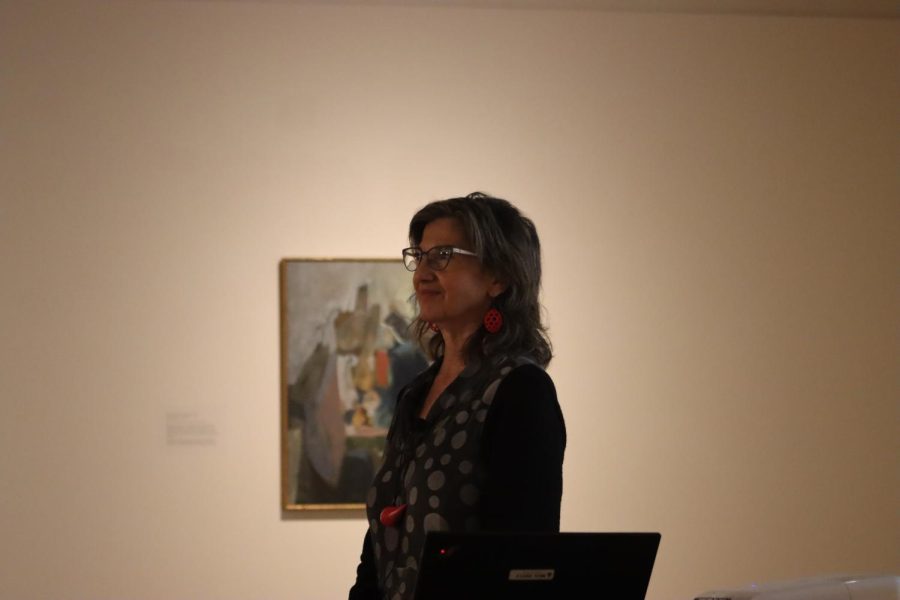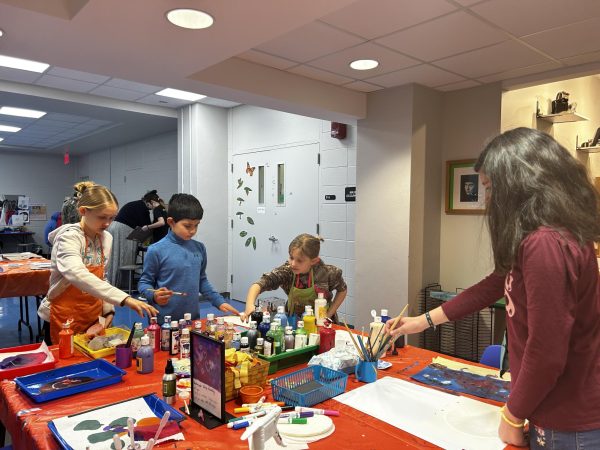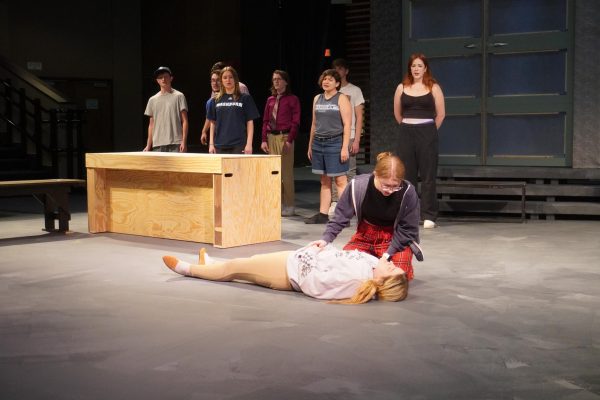Mulvane Art Museum holds ‘Slow Art Brown Bag’ lecture
Deena Amont, patron for art education and public outreach at Washburn, presents her insights on the Slow Art Brown Bag. It was held in the Mulvane museum.
On Nov. 16, at the Mulvane Art Museum, the Slow Art Brown Bag lecture series held a discussion about the artwork “El Buen Pastor (The Good Shepherd)” (1999) by Luis Jiménez. Deena Amont, patron for art education and public outreach at Washburn, asked interactive questions about the artwork that spiked the audience’s imagination. The discussion was held in Mulvane Art Museum’s Main Gallery from 12 to 1pm.
Starting with the audience looking at the artwork for a minute, the discussion led to many interpretations and hidden meanings within the piece. From a man tending his goats and foraging in the desert to understanding the depth and sadness of the artwork, the discussion truly shed light on the minute aspects of it. By analyzing the composition, components and details, the audience brought meaning into the snake being close to the sheep, a heart shape on the man’s shirt, color similarities and much more. The audience pointed out the Christian iconography due to the raised hand, the forthcoming posture of the man and the holding of the baby, halo and cross.
Eventually, the true meaning of the artwork was discussed.
On May 20, 1997, 18-year-old sophomore student Ezequiel Hernandez, Jr. was killed by a US marine while tending his goats near a desert palm, where he lived on the US-Mexican border in Redford, Texas. The marine was involved in military anti-drug operations when they shot Hernandez, Jr. The artwork represents the tragic consequence of America’s border policies through the murder of a sophomore student from Texas while he was caring for his goats.
“This is getting very topical to me, and it is hitting really hard,” said Ana Donley, office and museum services coordinator at the Mulvane Art Museum.
Amont then talked about the technique known as “visual thinking strategy,” which asks viewers what is going on in the picture that gives on-lookers a place to create their own interpretations. It allows one to provide evidence that supports their ideas that introduces deeper investigation.
The presentation of sculptures by Jiménez were also discussed. Jiménez was influenced by car culture and he popularized the use of fiberglass in his art. “The Eagle” from the Crystal Bridges Art Museum and the “Blucifer” mustang sculpture, which fell on and killed the artist at the Denver International Airport, were other topics that were discussed.
“Jiménez never really shied away from controversial topics as the subject of his art, and it represents the true story of Ezequiel Hernandez,” Amont said. “He is better known for his monumental, public art sculpture.”
Overall, the event held interesting discussions about art and the artist himself.
Edited by Glorianna Noland, Alijah McCracken
Your donation will support the student journalists of Washburn University. Your contribution will allow us to purchase equipment and cover our annual website hosting costs.













